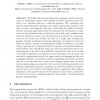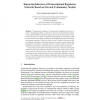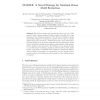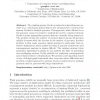103
Voted
WABI
2009
Springer
15 years 7 months ago
2009
Springer
Abstract. With Next Generation Sequencers, sequence based transcriptomic or epigenomic assays yield millions of short sequence reads that need to be mapped back on a reference geno...
105
Voted
WABI
2009
Springer
15 years 7 months ago
2009
Springer
Abstract. Computational inference of transcriptional regulatory networks remains a challenging problem, in part due to the lack of strong network models. In this paper we present e...
107
Voted
WABI
2009
Springer
15 years 7 months ago
2009
Springer
Background: Supertree methods combine the phylogenetic information from multiple partially-overlapping trees into a larger phylogenetic tree called a supertree. Several supertree ...
63
Voted
WABI
2009
Springer
15 years 7 months ago
2009
Springer
71
Voted
WABI
2009
Springer
15 years 7 months ago
2009
Springer
We develop, analyze and experiment with a new tool, called madmx, which extracts frequent motifs, possibly including don’t care characters, from biological sequences. We introduc...
102
click to vote
WABI
2009
Springer
15 years 7 months ago
2009
Springer
Abstract. The existing synteny block reconstruction algorithms use anchors (e.g., orthologous genes) shared over all genomes to construct the synteny blocks for multiple genomes. T...
102
click to vote
WABI
2009
Springer
15 years 7 months ago
2009
Springer
Background: Functionally related genes tend to be correlated in their expression patterns across multiple conditions and/or tissue-types. Thus co-expression networks are often use...
87
Voted
WABI
2009
Springer
15 years 7 months ago
2009
Springer
105
click to vote
WABI
2009
Springer
15 years 7 months ago
2009
Springer
We present a novel dynamic programming framework that allows one to compute tight upper bounds for the p-values of gapped local alignments in pseudo–polynomial time. Our algorith...
66
Voted
WABI
2009
Springer
15 years 7 months ago
2009
Springer





